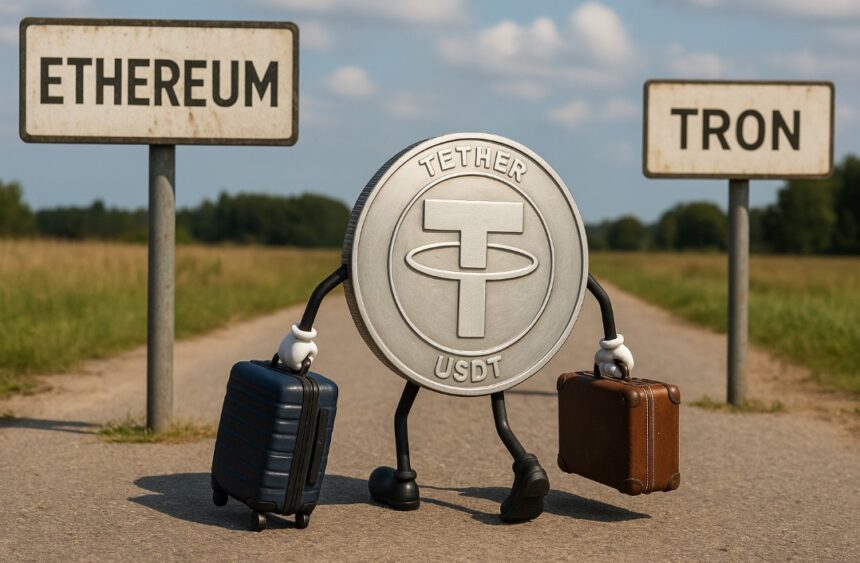In recent months, we have seen significant structural changes in the supply distribution of the USD Tether (USDT) stablecoin across major networks. Recent data shows that Tron’s growth in the global market for this digital currency is accelerating.
In detail, the Tron network’s share has skyrocketed from around 46% in September; It will reach up to over 60% in November 2025. That’s a 14 percentage point increase in just one quarter.
According to analysts at CryptoOnChain, “this change signals a significant shift in the liquidity that has historically remained on Ethereum.”
What does the graph show?
You can clearly see this evolution in the CryptoQuant chart below.
A historical comparison of USDT total supply between Ethereum and Tron shows an increasing dominance of the red area (Tron) since 2020. There will be a marked recovery, especially towards the end of 2025.
This percentage expression indicates: TRON absorbs an increasing portion of the circulating USDT supply. At the same time, the relative participation of Ethereum (shown in blue) will gradually decrease.
Another graph showing the total supply issued by each network supports the same conclusion. While Ethereum maintains the relevant absolute value (approximately 102.7 billion USDT), Tron far exceeds that number. It reached approximately 165.5 billion USDT.
This divergence explains why, despite the fact that Ethereum remains the leader in global issuance (with 47.61% of total supply concentrated, as seen in the distribution graph below). Tron is now the preferred network for daily USDT usage. According to DeFiLlama data, this accounts for 42.19% market share of stablecoins.
Transaction costs drive USDT migration from Ethereum to Tron
One of the key factors behind this shift is cost per transaction.
As Token Terminal data highlights, Tron’s average fees remain low and stable.. The above is close to the average of $0.66. That said, Tron’s fee reduction is a relatively recent phenomenon. As the graph shows, these fees increased almost continuously from January 2023 through 2025. Therefore, the migration of USDT from Ethereum to Tron coincides with a decrease in the fee price of the second network.
By comparison, Ethereum has recorded larger fluctuations and repeated spikes. The network has reported episodes with an average cost close to $0.91 and far exceeding that value during busy periods.
According to CryptoOnChain specialists, “low transaction fees and high network speeds” make Tron a suitable counterparty for high-volume transactions. In particular, it relates to cross-border remittances and liquidity in the Asian OTC market.
The observed behavior also suggests functional reorganization between both networks. Ethereum will maintain its role as the primary platform for issuing USDT and more complex services within the digital financial ecosystem. Tron positions itself as the operational infrastructure for high-speed, low-cost mobility.. All of this attracts centralized exchanges and large liquidity providers.
According to these analysts, if this trend continues, TRON could exceed 70% of USDT’s market share by early 2026. However, due to the depth of Ethereum’s market, Ethereum’s position remains strategic.
(Tag translation) Ethereum (ETH)


